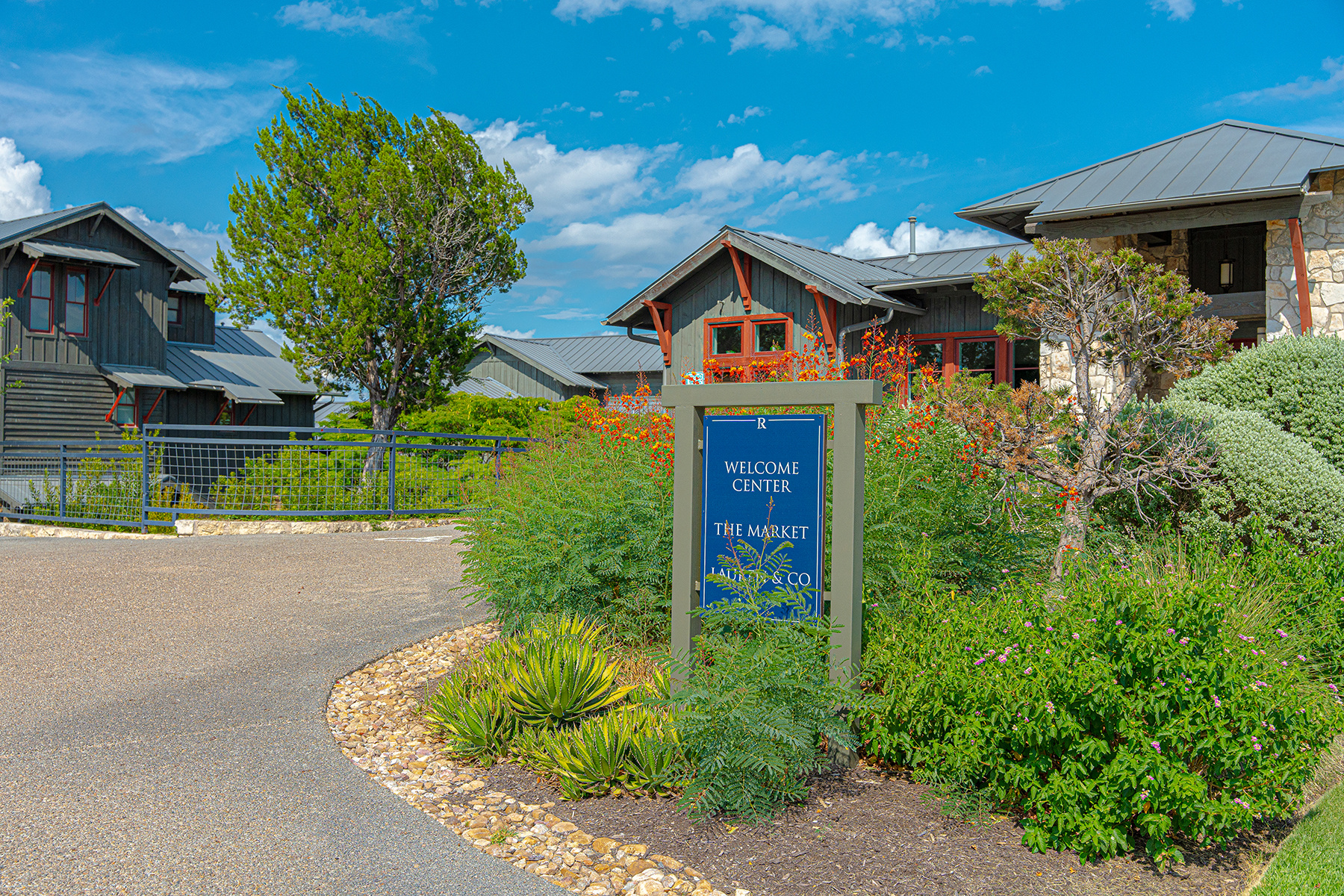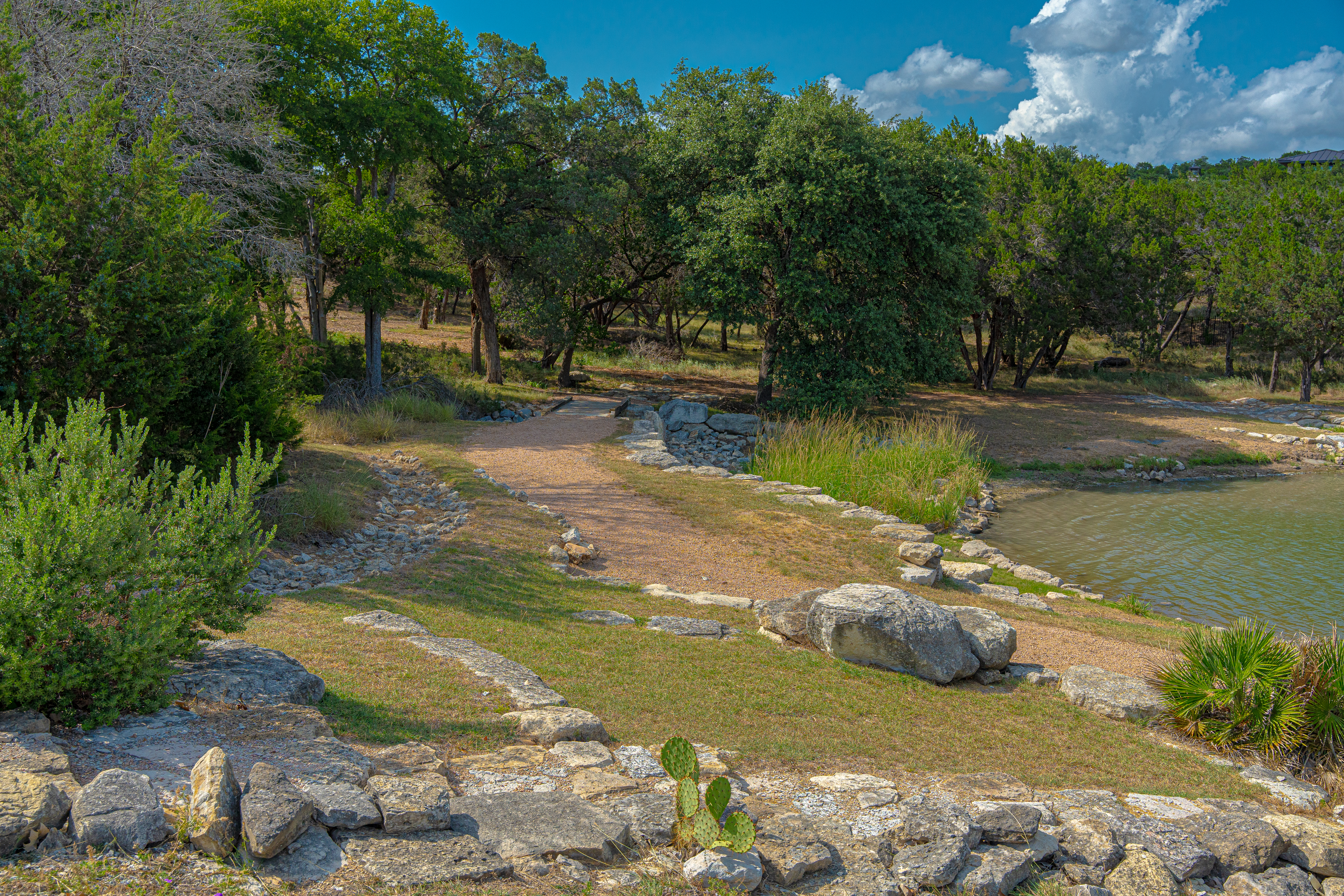One of Austin’s best-kept secrets is tucked away in “Texas Hill Country.” Among the rugged terrain that creates breathtaking views lies a luxurious waterfront community. This 311-acre remote paradise has three of the most exquisite miles of shoreline in Central Texas. Residents and visitors are treated to stunning lake views and world-class amenities such as a marina, an equestrian center, and a swim park. The exclusivity and natural beauty of the landscape draw people from all over the country, making this secret harder to keep with each passing year.
Challenges
Getting right to the heart of the landscape’s challenges, we have to note the remote location of this property. The top three concerns are limited access to resources, emergency response challenges, and attracting skilled labor. This doesn’t even mention the logistical hurdles to achieve operational efficiency for weekly maintenance.
There are also frequent droughts that go along with watering restrictions. This can limit plant options as we need to avoid installing plants too dependent on irrigation. Plus, future watering restrictions in this area are likely to become even tighter. And rightly so, as community members make the push to become sustainable in every way. Increasingly long and intense Texas heat waves make the plant selection challenge even more concerning.
The flip side of extreme heat is the wild swings that come with seasonal changes. The Hill Country region is also seeing more frequent cold snaps in the winter. Those freezing temperatures can come blowing in without much warning. Another environmental factor that many people don’t consider? The high winds that come with pop-up storms.
*Free lake property tips at the end of this case study*
Results
These challenges show how easy it would be for a landscape provider to “stumble” in maintaining this premier property. However, Yellowstone Landscape has met these concerns head-on, and here are a few of the ways we accomplish this.
- This property is assigned a dedicated crew to quicken emergency responses that would otherwise be slowed by the remote location.
- Limited access to local resources is overcome by our company’s ability to stockpile necessary materials and supplies.
- The Yellowstone Landscape logistics team works with local branch managers to maximize efficiency based on crew drive time, seasonal weather patterns, and the property’s plant types and groupings.
- Smart irrigation is used, and systems are updated with the newest features to reduce water use.
- Native and drought-resistant plants and trees are selected based on their ability to thrive in the Texas heat and dry spells.
- Mulch levels are monitored by the dedicated maintenance crew to hold in every drop of moisture for the valuable landscape elements.
- Soil quality is re-checked before each planting cycle to improve the rocky soil and maximize moisture retention.
- We’ve implemented integrated pest management for sustainability while protecting any heat-stressed plants from opportunistic pests that strike during droughts.
- Proper mulch levels help avoid root damage from unexpected freezes.
- Regularly scheduled irrigation checks enable our irrigation specialist to take action when freezing temperatures arrive out of nowhere.
- When making plant selections, we consider the potential for high winds and use natural wind-breaking elements when possible.
Noteworthy Property Reviews
“Very modern with an upscale feel.”
“My wife and I adore this place.”
“So quiet and beautiful here.”
Ideal Waterfront Feel
It’s hard to argue with perfection. And this gated community has found the perfect balance by blending its lovely natural surroundings with a modern lake lifestyle. Families are building a lifetime of memories with the numerous amenities while being vigilant about protecting this one-of-a-kind environment for future generations.
The property owners deserve a tip of the hat for setting an admirable tone. They’ve built a community that’s off the beaten path for all the right reasons. Just as impressive is how desirable a destination this community has become, considering how far away it is from the comforts of a city.
But with this remote location and others like it, staffing for the community’s vendors can become the toughest challenge to overcome. Today, it’s harder than ever for landscaping companies to find dependable, skilled labor (a recent survey showed 84% of landscaping companies agreed). Smaller companies often miss the opportunity to take on elite properties like this one. They simply don’t have the staff available to handle the additional work, especially if the property is nearly an hour away from their base of operations. Yellowstone Landscape overcomes this obstacle through our nationwide resources and systematic hiring strategy.
If you need a landscape provider that can handle logistic challenges and meet your expectations on a high-end property, contact Yellowstone Landscape today.
9 Tips for Sustainable Landscapes Around a Lake
- Consider a 15-foot no-mow zone where the lawn meets the lake. Allow grasses to grow tall to help establish native wildflowers, grasses, shrubs, and trees. This natural buffer filters pollutants and improves soil.
- Choose native plants suited to the local climate and soil conditions. Native plants require less water and fertilizer, reducing environmental impact.
- Implement xeriscaping techniques by choosing plants that can thrive with minimal irrigation. This conserves water and saves time and money on maintenance.
- Design permeable hardscapes like gravel walkways and patios to reduce runoff and allow water to absorb into the soil.
- Use sustainable irrigation systems like drip irrigation, which delivers water directly to plant roots, minimizing waste. Consider rainwater harvesting to collect and store rainfall for irrigation.
- Install low-flow toilets and showerheads to reduce water use and conserve local water resources. Use non-toxic, biodegradable cleaning products to protect water quality.
- Create a wildlife-friendly environment by planting native vegetation, installing birdhouses, and creating wildlife ponds or wetland areas.
- Plan proper waste management with compost bins and recycling to protect the environment.
- Consider terraced gardens for sloped lakefront properties—this controls erosion by slowing water runoff and stabilizing soil.




